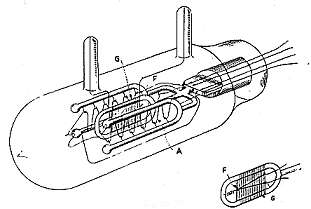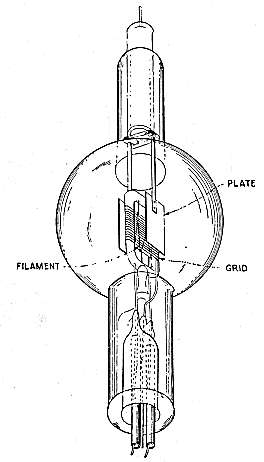 |
In the three-electrode tube,
the "Pliotron", the grid is shown at G, the filament at F - which is supported
by a glass frame - and the plate or anode at A. The grid consist of a number of
turns of tungsten wire .01 millimetre in diameter, spaced to include 100 turns
to the centimetre. The filament is mounted inside the grid. The plates or anodes
on either side of the filament consist of tungsten wire wound zigzag in the
manner shown. |

